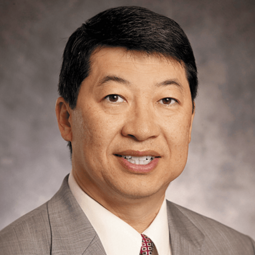David Chang
The Power List 2018

David Chang
Clinical Professor, University of California, San Francisco, CA, USA
David has chaired the AAO Annual Meeting program committee and their cataract guidelines (Preferred Practice Pattern) panel. David is a past Chief Medical Editor for both EyeWorld and Cataract & Refractive Surgery Today and has written best-selling – and many would say definitive – textbooks on refractive IOLs and phaco chop/complex cases. As the ASCRS Foundation and Himalayan Cataract Project advisor, he is involved in efforts to improve access to cataract surgery in the developing world, and has delivered the ASCRS Binkhorst and AAO Kelman Lectures, the APACRS Lim Lecture, and received the APAO Rizal International Medal. Chang was the first in the US to implant a light-adjustable IOL and the first to implant the Synchrony accommodating IOL.
What has been your most successful collaboration?
“I enjoy consulting and investigating for a variety of small companies that are developing innovative technologies and solutions for our field, in particularly for Zepto (Mynosys) and the light adjustable IOL (RxSIGHT) – both of which received FDA approved within the past 9 months. To first brainstorm ideas, then provide input on prototypes, then perform the first clinical cases in the US, and finally be part of the process to obtain FDA approval is an arduous but gratifying odyssey that will hopefully benefit patients for years to come.
For more than 15 years, I have enjoyed a unique collaboration with cataract surgeons at the Aravind Eye Hospital system in India on a variety of studies ranging from intracameral antibiotic prophylaxis and TASS, to reducing PCO and complications with mature cataracts. The latter are major issues in the developing world. Their unique combination of surgical expertise, volume, and standardization is unmatched for clinical research projects, and it’s been my good fortune and honor to have this longstanding partnership with the Aravind team.”
What are your goals for the future?
“The main Madurai Aravind hospital had only one case of endophthalmitis out of >50,000 phacos performed in 2017. They reuse multiple supplies (gowns, gloves, OVD, irrigation bottle and tubing) but routinely inject intracameral moxifloxacin. Despite all of our costly regulations and mandated single use of so many supplies, we have a 0.05% endophthalmitis rate in the US. So, we are one of many countries that need a commercially approved antibiotic formulation for intracameral prophylaxis. Our ASCRS research council is designing a multicenter clinical trial for this purpose, and we are doing our best to get there. I may be naive, but if we could practically eradicate endophthalmitis with intracameral moxifloxacin, we could hopefully demonstrate, as they have at Aravind, that many costly and wasteful traditional OR practices are unnecessary. Reducing the cost and the carbon footprint of the most common operation performed worldwide, without compromising safety, would be an enormous benefit to every society.
As a profession, our biggest challenge is the growing backlog of cataract blindness in the developing world. While our own patients are beneficiaries of increasingly sophisticated technology, cataract blindness will not be solved by refractive IOLs and femtosecond lasers. Different innovations that are low tech, affordable, and more easily mastered than phaco are needed. Manual small incision cataract surgery (MSICS) is the most important innovation so far. I work with a group within Iantech, which is devoting resources to developing a low-cost iteration of its miLOOP that could be used for MSICS in resource-limited countries. I am also working with a team that is developing a promising topical medication that could prevent or potentially reverse cataract formation. A non-surgical way to halt or delay cataract blindness will have a far wider global impact than any surgical intervention ever could.”












